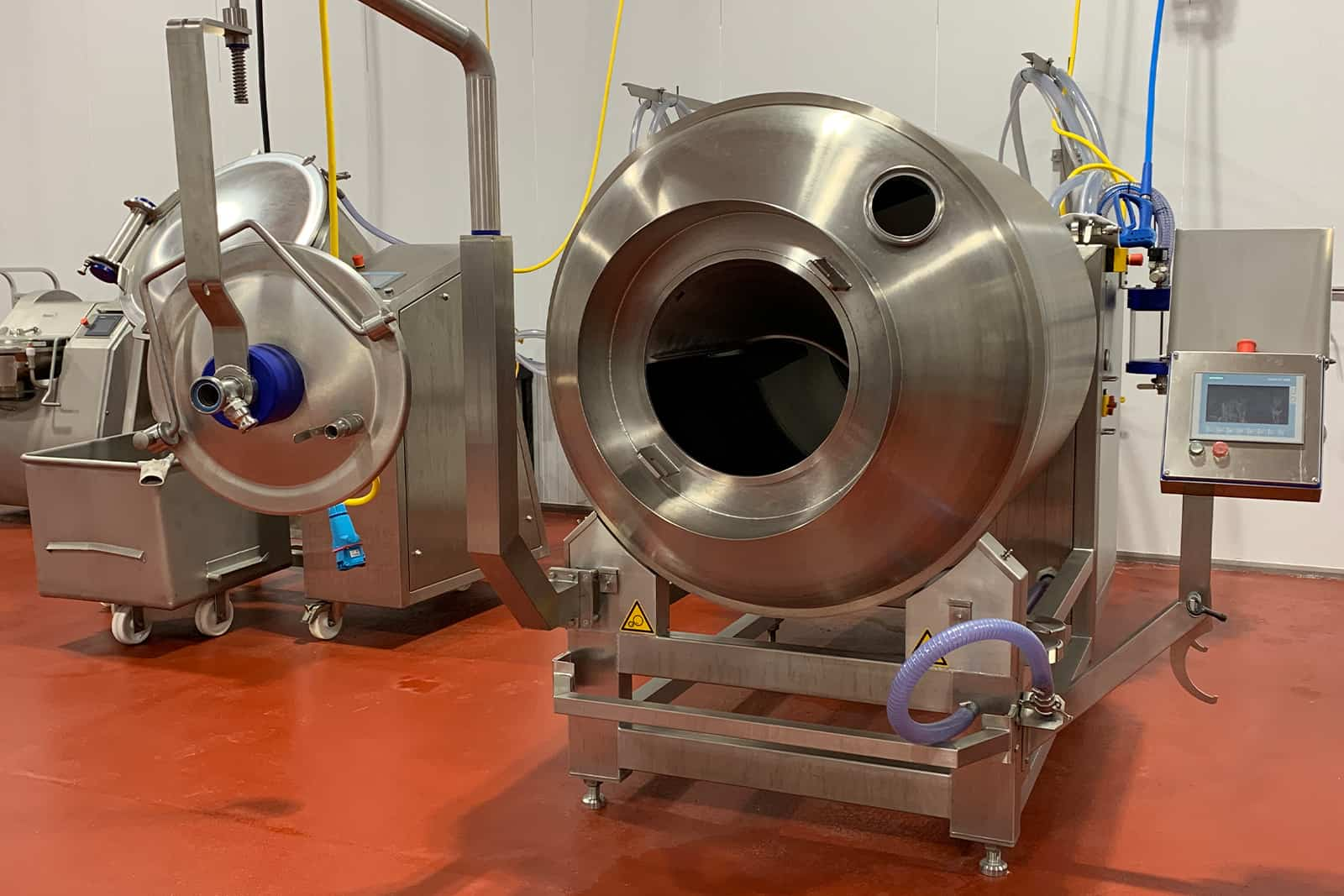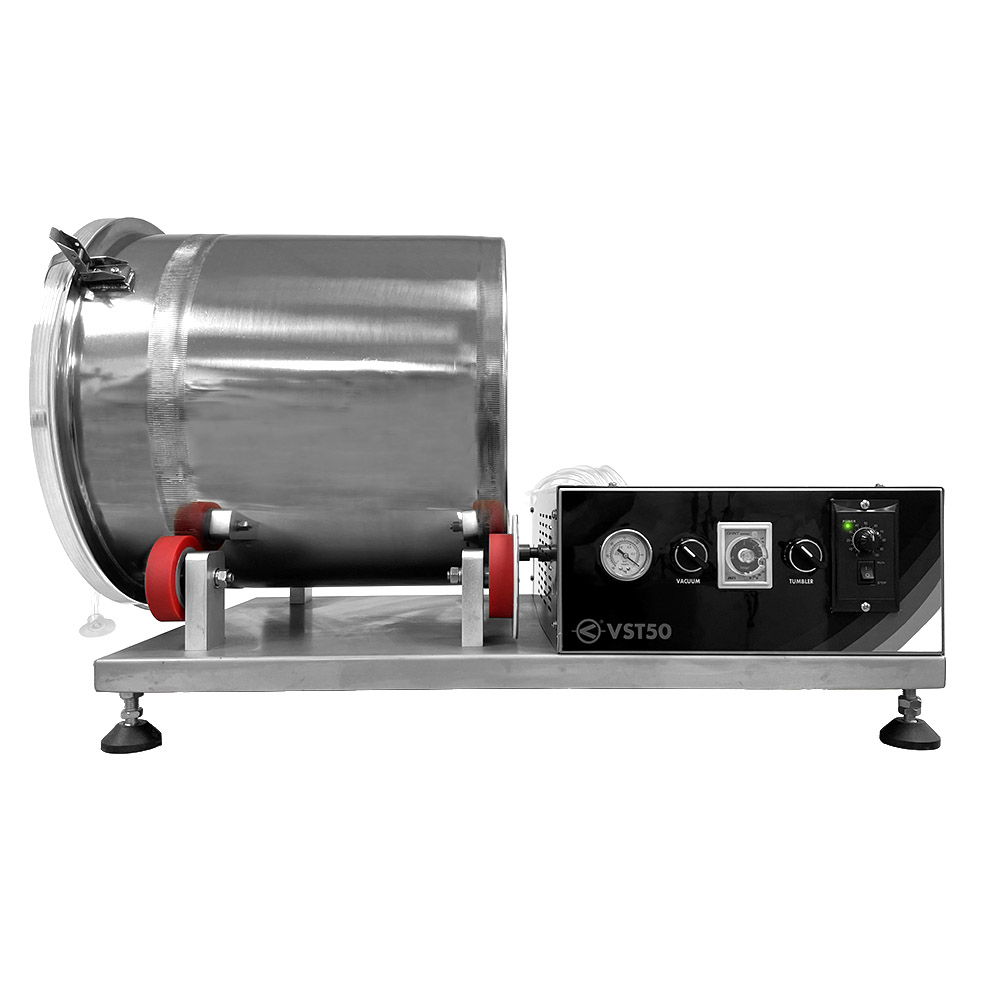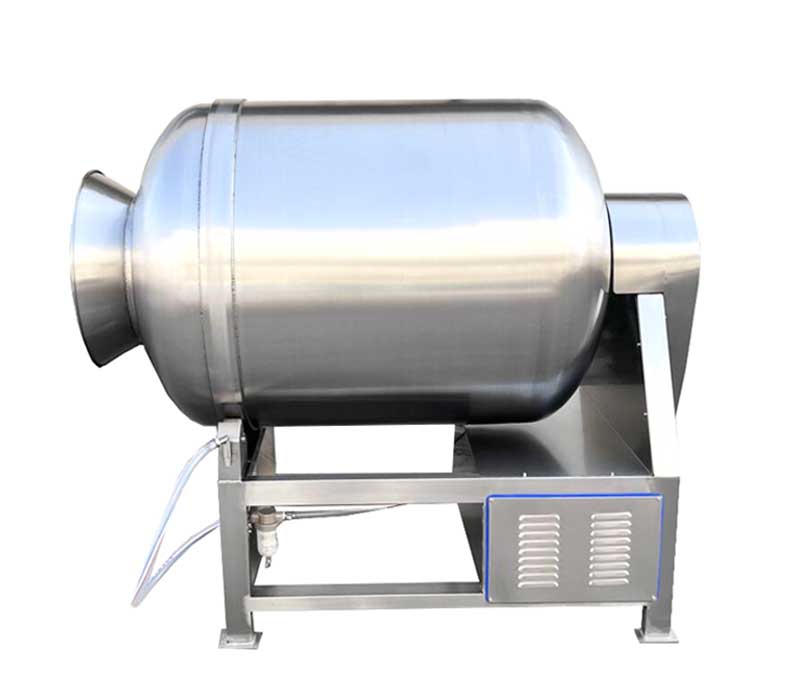10 years of experience as a food machinery equipment manufacturer
10 years of experience as a food machinery equipment manufacturer
In the realm of modern meat processing, particularly concerning beef products, efficiency, consistency, and quality are paramount. Among the array of equipment designed to achieve these objectives, the beef vacuum meat tumbler holds a significant position. This apparatus is engineered to enhance various properties of beef, from tenderness and flavor to overall yield, through a controlled mechanical and atmospheric process. Its application spans various scales of operation, from artisanal butcheries to large industrial facilities, reflecting its versatility in meat preparation.

The fundamental purpose of a vacuum meat tumbler is to optimize the marination and tenderization processes. By combining mechanical action with a vacuum environment, these machines facilitate a more thorough and rapid interaction between the beef and any added ingredients, such as marinades, brines, or seasonings. This technology represents a development from traditional static marination methods, offering processors greater control over the final product characteristics.
A beef vacuum meat tumbler operates on a few key principles. The core component is a rotating drum, often equipped with internal baffles or paddles. Beef cuts, along with the desired marinade or curing solution, are placed inside this drum. The critical aspect differentiating this process is the application of a vacuum. Once the drum is sealed, air is evacuated, creating a low-pressure environment within.
This vacuum environment serves multiple purposes. Firstly, it removes air from the spaces between muscle fibers and from within the meat’s pores, effectively expanding the meat’s structure. This expansion makes the meat more receptive to marinade uptake. Secondly, in the absence of air, oxidative processes that can degrade flavor and color are minimized. The tumbling action itself provides the mechanical energy. As the drum rotates, the beef is gently lifted and dropped by the baffles. This massaging action helps to break down tougher muscle fibers and connective tissues, contributing to increased tenderness. Furthermore, the constant motion ensures that all surfaces of the beef are uniformly exposed to the marinade, promoting even distribution and absorption.
Compared to traditional static marination, where meat simply soaks in a solution, vacuum tumbling can significantly accelerate the process. The combination of vacuum-induced expansion and mechanical massaging allows marinades to penetrate deeper into the muscle tissue more quickly and evenly.
The utilization of beef vacuum meat tumblers can offer several notable advantages in the processing of various beef products. These benefits are primarily linked to the machine’s ability to manipulate the meat’s physical structure and its interaction with added ingredients.
The vacuum environment expands the muscle fibers of the beef, creating more pathways for the marinade to enter. The tumbling action then ensures that the marinade is continuously worked into the meat from all angles. This results in a deeper and more uniform penetration of flavors and functional ingredients compared to soaking alone, where penetration might be largely superficial, especially in thicker cuts of beef.
The mechanical action of tumbling, where beef cuts are gently massaged and worked against each other and the drum’s baffles, helps to physically break down tough muscle fibers and connective tissues. This process, known as mechanical tenderization, can lead to a noticeably softer texture in the final cooked product, making even less premium cuts of beef more palatable.

Effective marinade absorption means that the beef retains more moisture. Vacuum tumbling can help proteins within the meat to bind more water and marinade solution, leading to a higher overall weight after processing. This is particularly relevant for cured and cooked beef products, as it can help offset moisture loss during cooking, resulting in a juicier product and better yield for the processor.
By ensuring uniform distribution of marinade, salt, and other curing agents, vacuum tumblers contribute to greater consistency from batch to batch and within individual pieces of beef. This means more predictable flavor profiles, color development (especially in cured products like corned beef), and texture, which are crucial for brand reputation and customer satisfaction.
Marination and curing processes that might take days using traditional static methods can often be accomplished in a matter of hours with a vacuum tumbler. This acceleration of the processing timeline allows for greater throughput, more efficient production scheduling, and quicker turnaround times for beef products.
Deeper marinade penetration directly translates to more intense and well-distributed flavor throughout the beef. The improved moisture retention, facilitated by the binding of the marinade within the meat structure, contributes to a juicier end product, enhancing the overall sensory experience.
When considering beef vacuum meat tumblers, several design and operational features are commonly found, catering to different processing needs and scales. These features influence the machine’s efficiency, ease of use, and suitability for specific applications.
Tumblers vary significantly in size, from small tabletop models suitable for test kitchens or small butcheries (e.g., 50-100 liter capacity) to large industrial units capable of processing thousands of kilograms of beef per batch. The choice depends on the processor’s volume requirements.

The quality and power of the vacuum pump are critical. Efficient systems can achieve and maintain desired vacuum levels quickly. Some models offer programmable vacuum levels and cycles, allowing for intermittent vacuum application if desired for specific beef product types.
This includes the design of the drum, the shape and configuration of internal baffles or flights, and the range of available rotation speeds. Variable speed control allows processors to adjust the intensity of the tumbling action – a gentle massage for delicate beef cuts or a more vigorous action for tougher ones. Some tumblers also offer reversible rotation.
Food-grade stainless steel (typically 304 or 316 grade) is the standard material for construction due to its durability, resistance to corrosion from salt and acidic marinades, and ease of cleaning. Smooth, polished surfaces and hygienic design principles are important for preventing bacterial growth.
Modern tumblers often feature programmable logic controllers (PLCs) with touch-screen interfaces. These allow operators to set and store various processing parameters, such as total tumbling time, rest periods, rotation speed, direction, and vacuum levels, ensuring consistent processing cycles for different beef recipes.
Ease of cleaning is a crucial consideration. Designs that allow for quick disassembly of parts, easy access to internal areas of the drum, and effective clean-in-place (CIP) capabilities where applicable, help maintain high hygiene standards and reduce downtime.
Beef vacuum meat tumblers are versatile tools employed in the preparation of a wide array of beef products. Their ability to enhance flavor, tenderness, and yield makes them valuable in various segments of the meat industry. For instance, they are commonly used in the production of value-added beef cuts like marinated steaks, beef tips, and kebabs, where consistent flavor infusion and tenderness are key selling points. The technology is also instrumental in creating traditional cured beef products such as corned beef or pastrami, where uniform salt and spice distribution is critical for both preservation and flavor profile. Beef jerky manufacturers also utilize tumblers to ensure their marinade thoroughly penetrates the beef strips before drying.
Beyond specific products, these machines find utility in diverse operational settings. Butcher shops can use smaller tumblers to create signature marinated beef items, offering customers unique and ready-to-cook options. Restaurants, particularly those with a high volume of beef dishes, may employ tumblers to pre-prepare beef, ensuring consistency and reducing kitchen labor. Large-scale meat processing plants integrate industrial-sized vacuum tumblers into their production lines to process substantial quantities of beef efficiently for wholesale or retail distribution.
The use of a vacuum meat tumbler can have a discernible impact on several key characteristics of the final beef product. Texture is often noticeably improved, with beef becoming more tender due to the mechanical breakdown of muscle fibers. This can make less expensive cuts more appealing and premium cuts even more succulent. The flavor profile is typically intensified and more deeply integrated into the meat, rather than just being a surface treatment. This is a direct result of the enhanced marinade absorption. Furthermore, the juiciness of cooked beef can be increased because the absorbed marinade contributes to overall moisture content, which is better retained during cooking. Even the visual appearance can be affected, particularly in cured beef products where uniform color development is essential and facilitated by even distribution of curing agents.
For businesses contemplating the adoption of beef vacuum meat tumbler technology, several practical aspects warrant consideration. The physical footprint of the machine and the necessary ancillary space for loading, unloading, and cleaning must be factored into facility layouts. The initial capital investment for the equipment itself, along with potential installation and utility upgrade costs (e.g., electrical, vacuum lines), needs to be evaluated against projected benefits in product quality and operational efficiency. Furthermore, operators may require specific training to effectively utilize the machine’s programmable features and to understand the nuances of how different tumbling parameters affect various types of beef and marinades. Proper cleaning and maintenance protocols are also crucial for longevity and food safety, requiring dedicated time and resources.
Beef vacuum meat tumblers represent a sophisticated technology within the meat processing industry, designed to address key objectives of product enhancement and operational efficiency. By combining mechanical action with a controlled vacuum environment, these machines offer a systematic approach to improving marinade penetration, tenderness, yield, and consistency in a wide range of beef products. While requiring investment and operational understanding, their potential to elevate the quality of beef and optimize processing times positions them as a noteworthy consideration for businesses aiming to refine their meat preparation techniques and meet consumer demand for flavorful, tender, and high-quality beef.
